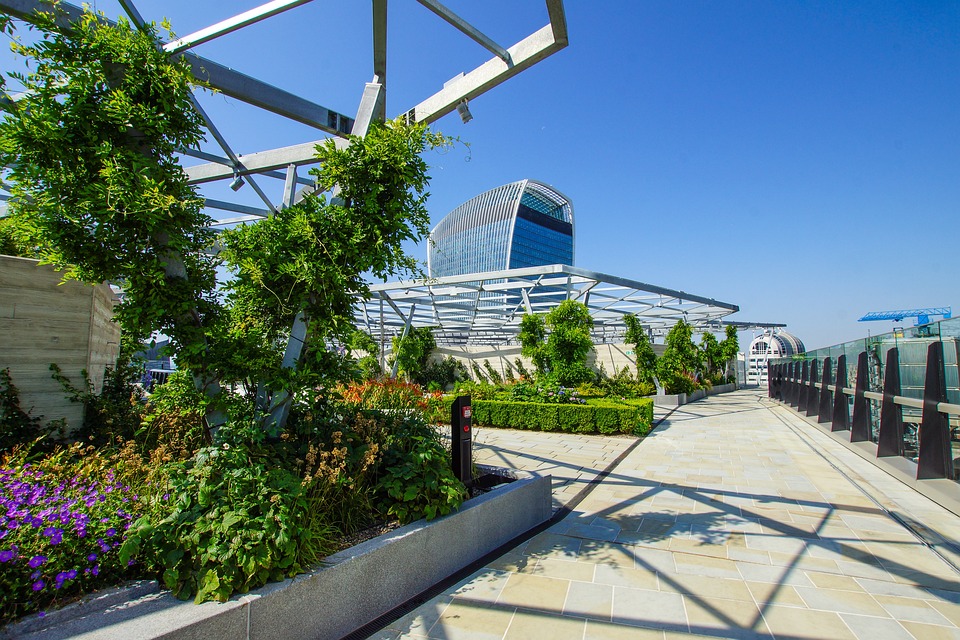





The topics covered by the three new LPG’s are Urban Greening Factor, Air Quality Neutral and Air Quality Positive. While LPGs have no specific statutory weight and cannot create or change London Plan policies, they are capable of being a material planning consideration; and adds further, more detailed guidance as to implementation of the London Plan in practice.

Urban Greening Factor London Plan Guidance
It is the hope that the Urban Greening Factor (UGF) LPG will provide further guidance to support LPAs and planning applicants alike to implement the urban greening requirements set out in London Plan Policy G5. We have covered previously that the UGF is a tool to measure and assess the quantity and quality of greening provided on a development and the guidance builds on the requirements in London which sets out interim targets for different development types, providing further advice on the application of the UGF tool to developments and advice to boroughs on introducing UGF targets through Local Plans.
The LPG provides guidance on how to incorporate UGF principles into scheme design; and sets out in detail how UGF scores should be measured, presented and assessed. It provides further information on the surface cover greening types in Table 8.2 of the London Plan; and provides some clarification on the relationship to other policies such as Policy G6 Biodiversity and Access to Nature and national Biodiversity Net Gain (BNG) requirements including signposting to emerging fire safety guidance which restricts the use of green walls as no green wall products are able to meet the standard for non-combustibles which is likely to have a significant impact to our clients who regularly use green walls to improve the UGF score on schemes.
The LPG also sets out a recommended process for boroughs in developing local UGF targets, including how to establish a green infrastructure baseline and how to identify opportunities for new greening and other relevant information to inform local targets.
Air Quality Neutral London Plan Guidance
The Air Quality Neutral (AQN) LPG aims to support LPAs and planning applicants to meet the requirements of, and implement, London Plan Policy SI 1 Improving Air Quality Part B(2)(a) and Part E. This policy requires all development in London to achieve the Air Quality Neutral standard or, put simply, does not contribute to air pollution beyond allowable benchmarks. As a result, the LPG sets out the detailed process for calculating the benchmark and the expected emissions rates for developments, as well as how to assess performance against the benchmarks and other technical considerations which will prove a helpful addition for many of our clients. The guidance also revises the benchmark emission rates set in the previous Sustainable Design and Construction Supplementary Planning Guidance.
Air Quality Positive London Plan Guidance
The Air Quality Positive (AQP) LPG aims to support LPAs and planning applicants to meet the requirements of, and implement, London Plan Policy SI 1 Improving Air Quality Part C. This requires that master plans and development briefs for large-scale development proposals subject to an Environmental Impact Assessment (EIA) should be accompanied by an AQP Statement. These statements should demonstrate:
The AQP approach aims to maximise the benefits to local air quality in and around significant development sites or master plan areas; and minimise exposure to existing sources of poor air quality. It encourages planners, designers, architects, and air quality experts to actively seek ways to achieve the best possible outcomes from their developments in terms of air quality and to go beyond simply meeting the maximum threshold of allowable contribution to air pollution.
Therefore, we will be advising out clients that for large-scale development requiring submission of an EIA, that air quality expertise be engaged throughout the design process in order to maximise the potential benefits. The AQP approach does not use a threshold in its assessment, and instead brings together a range of evidence in support of a planning application to show how air quality has been considered holistically; and how the proposal provides benefits to air quality. The guidance sets out the minimum standards for an acceptable AQP Statement as well as providing guidance on how to apply the approach to different scales of development and at different stages in the planning process (e.g. at a master planning stage versus at the detailed application stage).

If you have any questions in relation to this or any other forms of development, then we would be delighted to speak to you.
Get in touch with us now .https://www.bell-cornwell.co.uk/contact/